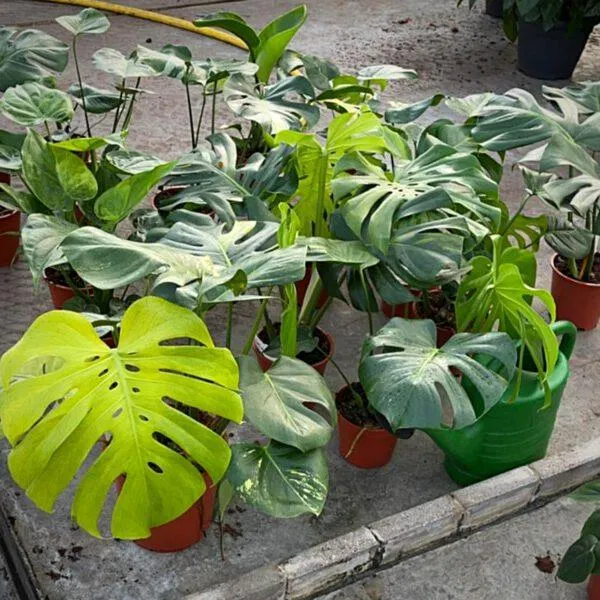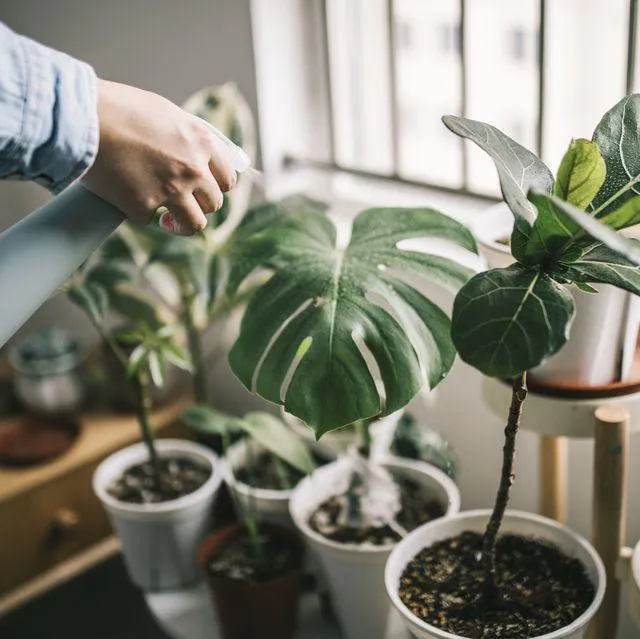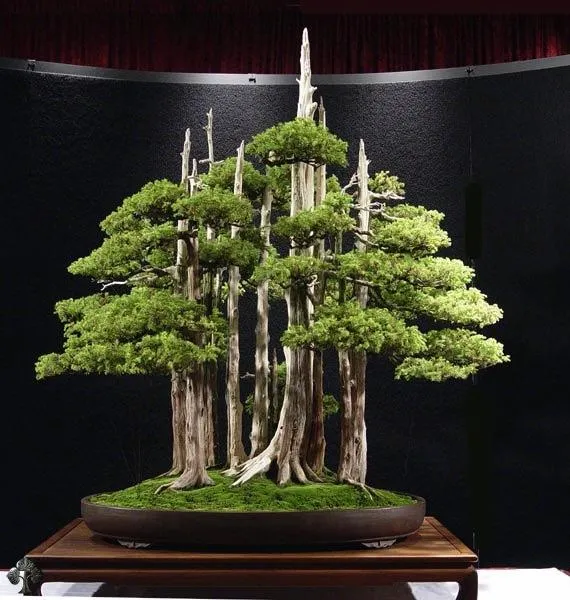The Most Beautiful Indoor Trees to Bring Nature Inside
Like many folks, you’re probably looking to add a touch of lively greenery to your indoor spaces. But with so many tree options available, it can be tough knowing which varieties will not only look stunning but also thrive in the confines of your home. In this article, I’ll break down the prettiest indoor trees to consider and reveal all you need to know to choose the perfect match for your space.
Fig Trees
From my experience helping clients with indoor landscaping, fig trees (Ficus species) are consistently one of the most beautiful choices. Their lush, dense foliage comes in various shapes and sizes to suit any style. Figs tolerate low-light conditions well and are quite durable if cared for properly. I’ve seen them thrive for years in homes with just windows providing daylight. A fig tree lends an instant touch of the tropics without requiring a greenhouse.
- Ficus benjamina or weeping fig is an excellent starter tree with its cascading branches and small, shiny green leaves.
- Ficus lyrata or fiddleleaf fig has large, textured leaves similar to a houseplant classic. It makes quite a statement.
- Ficus elastica or rubber tree has lush, glossy foliage available in green or variegated forms for high style.
While fairly low-maintenance in general, fig trees do require occasional pruning and may drop leaves if distressed. Make sure any spots you place them get bright, indirect light. Figs also prefer consistently moist soil, so water just before it starts drying out.
Jade Plants
In my practice, jade plants (Crassula ovata) have proven one of the hardiest and lowest-maintenance indoor trees. Their thick succulent stems and leaves allow them to survive long periods with little water. I’ve even seen jades thrive in offices with primarily artificial light! Their non-fussy nature makes them great for beginners.
Jades come in an array of forms from compact balls to tall, cascading styles. Their dark green or variegated foliage has a lovely waxy texture. Come-hither pink or red bloom clusters add surprising beauty. Jades are basically foolproof as long as given a sunny window and an occasional drink. Their durability makes them impressive conversation pieces that can be passed down as heirlooms.
Dwarf Umbrella Trees
If you’re more confident in your green thumb skills, consider a dwarf umbrella tree (Schefflera arboricola). Kind of basically like a miniature version of their larger landscape counterparts, these slow-growing trees have a unique cascading structure resembling an open umbrella.
Their clusters of deeply lobed, dark green leaves deliver serious style. From my experience, umbrella trees enjoy moderate indirect light and regular watering to maintain their full shape. Sort of be cautious not to overwater, as their roots are more prone to rot issues compared to other trees. With care, dwarf umbrellas make stunning centerpieces able to fit in smaller spaces for many years.

Chinese Evergreens
Chinese evergreens (Aglaonema species) offer a versatile assortment of dramatic foliage to brighten any interior. I’ve seen them brought back from nearly crispy edges more times than I can count! Their broad, patterned leaves come in shades like emerald, cream, and pink variegation. Chinese evergreens handle moderate neglect quite well, only demanding water when their soil dries out partially.
Amazingly, I’ve found they tolerate low-light corners just fine as long as given sufficient moisture. Some varieties even thrive in shade! These troopers bring lush depth to any environment. Just be sure not to overwater, as their roots are prone to rotting issues then. With their resilience, Chinese evergreens make wonderful indoor trees for years of natural beauty.
Dwarf Palm Trees
While taller palms might seem an ambitious choice, dwarf varieties (Arecastrum and Chamaedorea species) scale down tropical allure to fit cozily indoors. Their slender trunks crown dense heads of graceful fronds resembling miniature versions of exotic landscapes. Dwarf palms handle typical household temperatures fine and brighten up rooms gorgeously year-round.
Some of my favorite compact styles include the areca palm, bamboo palm, and lady palm. Dwarf palms prefer regular water, bright light, and perhaps a weekly foliar spray to maintain their lush appearance. Be cautious of overwatering, as soggy soil conditions spell trouble more frequently than neglecting them a bit. But their relaxed needs mean dwarf palms can definitely dress up a space with a wow factor without fussy demands.
Dwarf Umbrella Trees (Continued)
To continue our discussion on dwarf umbrella trees, I want to address some common issues from my experience caring for them. Despite their relatively low demands most of the time, umbrella trees do require some know-how to stay healthy over long periods indoors.
First, resist overwatering their moist but well-draining soil. Soggy conditions commonly lead to deadly root rot problems. Also, keep an eye out for pests attracted by thick foliage like spider mites or scale insects. Regular inspections and quick treatment prevents infestations.
Umbrellas also tend to drop lower leaves as they age normally in optimal environments. So moderate pruning maintains their structure. Under optimum care, dwarf umbrella trees transform any room into a little slice of the tropics for many happy years! Just pay close attention to moisture levels and signs of pests to prevent issues.

Holiday cacti
If your schedule leaves little time for fussing over plants, try low-maintenance holiday cacti (Schlumbergera bridgesii). Basically contrary to their name, these seasonal bloomers need almost no care outside flowering periods. Their joints hold rounded pads and patches of soft spines ideal for minimalists.
During autumn and winter, holiday cacti erupt in vibrant red, pink, or white blooms resembling mini poinsettias. I’ve found them perfectly content to sit for weeks unwatered between drenchings. Often sold blooming already around gift-giving holidays, they bring festive color until spring. Just be sure to place them where they get ample natural light. Like hearty houseplants with just seasonal decoration added!
As indoor trees go, can holiday cacti be beat for set-it-and-forget-it style? Their resilient nature and bountiful seasonal blooms lend cheerful accent to any area effortlessly. No anxiety about constant care needed unlike some other choices. Holiday cacti breathe life into spaces when you have minutes to spare tending plants each week.
Dwarf Orchid Trees
For a real showstopper in smaller confines, investigate dwarf orchid trees (Bromeliad species). These whimsical plants resemble miniature trees, their stems crowned with rosettes suggesting leaves. Yet hidden within each rosette waits a colorful surprise – cascading clusters of tiny blooms. Shades range from sunset orange to robin’s egg blue.
From my experience, orchid trees want humidity, bright light, and infrequent watering of just their crown. Avoid soaking their bases where water may become trapped. I’ve salvaged both leggy and lush specimens by tweaking care. Repot only when new growth emerges from the center crown itself. With patience, dwarf orchid trees stun indoors for months at a time risk-free.
So in summary, the prettiest indoor trees really depend on individual space and care preferences. But hopefully this overview revealed the top frontrunners and what they generally require to thrive happily confined inside. With some TLC, figs, palms, umbrella trees, orchids and more deliver gorgeous greenery indoors without fussy demands. Shoot me a message if you need any other advice finding a perfect match!
Top 10 Prettiest Indoor Trees
| Tree | Size | Watering | Light | Notes |
|---|---|---|---|---|
| Dieffenbachia | Med-Large | Moderate | Medium | Colorful leaves, nontoxic to pets |
| Chinese Evergreens | Small-Medium | Moderate | Medium-Low | Variegated foliage comes in many varieties |
| Rubber Plant | Medium-Large | Moderate | Medium | Striking foliage, tolerates lower light |
| ZZ Plant | Medium | Minimal | Low | Very low maintenance, thrives on neglect |
| Snake Plant | Medium-Large | Minimal | Low | Air purifying, hardy, tolerates many conditions |
| Peace Lily | Small-Medium | Moderate | Medium | Fragrant white flowers, indication of water needs |
FAQ
- What are some of the prettiest indoor trees?
Some of the most lovely indoor trees include:

- Chinese evergreen – This tree has stunning dark green leaves that are shaped almost like ferns. It naturally grows short though you can trim it into different shapes. Chinese evergreen does well in low or medium light.
- Dwarf rubber plant – The dwarf rubber plant, also called ficus elastica, is sort of like a scaled-down version of its bigger relatives. It has thick, glossy leaves that come in various shades of green. This tree is pretty durable and does alright in low humidity.
- Money plant – Otherwise referred to as pilea peperomioides, the money plant has round, flat leaves that are very neat looking. It can get quite full and bushy. Money plants are pretty easygoing as far as care.
- What is the best location in a home for indoor trees?
The most superb place to set an indoor tree is usually near a window where it will get natural light for most of the day. East or west-facing windows work well so the tree is not in direct sun all afternoon.
- How often do indoor trees need water?
The frequency of watering largely relies on the particular type of tree and conditions. Most indoor trees like to dry out somewhat in between waterings. A good rule is to check the soil frequently by sticking your finger an inch or two down and only watering when the top soil feels dry. During warmer months you may need to water every 5-7 days, but winter months could stretch it out to every couple of weeks.
- What is the best potting mix for indoor trees?
A well-draining potting soil specially made for houseplants works top-notch for indoor trees. Look for a mix that is loose and airy to prevent roots from getting soaked. It should comprise components like peat moss or coco coir to retain moisture along with perlite or vermiculite for drainage. Steer clear of regular potting soil meant for outdoor plants since it may compact too much.
- What are some common pests and diseases that can affect indoor trees?
Mealybugs, spider mites, and scale insects occasionally bother indoor trees. Mealybugs look like fluffy dots along stems and leaves and can spread quickly. Spider mites spin tiny webs on the undersides of leaves and suck out plant juices. Both of these pests may indicate the tree is stressed from overwatering or low humidity. Pruning off affected parts and spraying with insecticidal soap can cure any issues.
- How do you prune an indoor tree to keep it healthy and bushy?
It’s best to trim indoor trees after flowering or when new growth starts in spring. Use clean, sharp scissors or pruners. For trees getting leggy, cutting back the long stems by 1/3 can encourage fullness. You can also shape trees with careful trimming over time. Piles may branch out if you cut off the growing tip. Despite that, only trim as needed since too much can shock some houseplants.
- What is the average lifespan of an indoor tree?
If cared for properly, many indoor tree species can survive for a number of years, maybe even a decade or longer. However, their lifespan likely depends on the variety. Slow-growing trees like Chinese evergreen reportedly may outlive the average person with proper care. Still, indoor conditions are not the same as being outside, so health issues or you replacing an old tree are possibilities eventually.
- How can I tell if my indoor tree is healthy or stressed?
There are some signs to look out for. A happy tree usually has dark green, shiny leaves and steadily puts out new growth. On the other hand, one showing signs of unhappiness may drop lots of leaves, grow leggy, or get pests basically because its needs are not being met. Yellow or brown spots on foliage could indicate overwatering or a nutrient issue. Getting to know your tree makes it more clear if something seems off.

